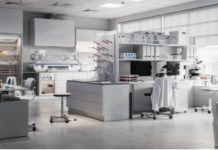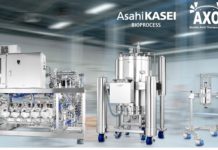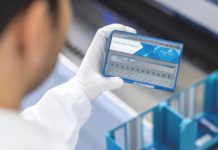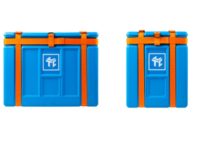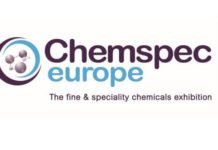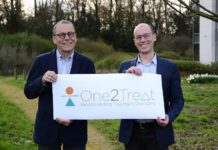PharmaDiagnostics NV, a company developing and marketing a broadly-enabling, label-free screening technology that uniquely does not require specialized equipment, announces today the launch of three new methods for coupling proteins to the gold nanoparticles used with PharmaDiagnostics’ SoPRano (TM) technology. The new coupling methods will greatly expand the technology’s applicability in the key drug discovery and life science research markets. The three new coupling methods, for use with SoPRano ‘Build-Your-Own-Assay’ kits are:
* Carboxyl coupling, one of the most commonly used techniques employed by SPR instrument users, provides a stable covalent linkage of protein to the nanoparticles;
* CA2 (Charge Adsorption 2) methodology, which expands the current SoPRano charge adsorption method to proteins in high salt and with high pI;
* Biotin-Direct (BD), which uniquely enables direct coupling of biotinylated proteins to gold nanoparticles. The method has a particular benefit over standard streptavidin-biotin couplings in that the biotinylated proteins bind directly to the gold, without the need for streptavidin. Non-specific binding of potential drug candidates to streptavidin is a frequent problem that greatly complicates the discovery process, reducing success rates and increasing cost. PharmaDiagnostics’ Biotin-Direct method now offers pharma and biotech companies a method that overcomes these issues, with the potential to improve the quality of early stage drug discovery.
Both the CA2 and BD methods are patent pending.
PharmaDiagnostics’ SoPRano technology is based on Localized Surface Plasmon Resonance, a variant of the well-proven Surface Plasmon Resonance (SPR) technology. Unlike standard SPR techniques, SoPRano uses gold nanoparticles in solution form and therefore is suitable to high throughput applications using only standard laboratory equipment, thereby eliminating the need for costly specialist or dedicated equipment. Coupling of target proteins to SoPRano nanoparticles is the first step in assay development, and the three new coupling methods extend the range of proteins that can be coupled to SoPRano nanoparticles, thereby enabling broader application of the technology in pharmaceutical research.
The current SoPRano coupling method, Charge Adsorption 1, introduced by PharmaDiagnostics in September 2010, is already being trialled by seven of the top ten pharma and multiple biotech companies.
“These three new coupling methods expand the range of proteins that can be coupled using SoPRano technology. They are also designed to parallel those coupling methods used on existing SPR instruments.” said Dr. David Ricketts, CEO. “This means PharmaDiagnostics’ SoPRano platform can be applied more routinely, accelerating its adoption at an increasing number of companies. These couplings also provide PharmaDiagnostics with a base for the further extension of our product range, including new applications and additional coupling methods to be announced from April 2011,” added Dr. Ricketts.
About PharmaDiagnostics NV
PharmaDiagnostics NV develops label-free screening technology with the unique capability in its market of operating without the need for specialized hardware. The technology is broadly enabling and applicable to a range of applications including: receptor-ligand binding; enzymatic reactions; antibody screening and ADME. The assays are very sensitive and have the potential for very high throughput. The company is focused upon licensing its technology for use in pharmaceutical and biotechnology companies, and also offers bespoke assay development services. In addition the company is seeking collaborations to develop applications in compound screening, particularly fragment screening and antibody screening. PharmaDiagnostics’ novel technology platform, SoPRano (TM), is based on localized surface plasmon resonance (LSPR) and noble metal nanoparticles, and is run on standard laboratory equipment.
The company, based in the Z1 Research Park in Zellik, near Brussels, was founded in 2007. It has raised more than EUR 4.0 million (USD 5.6 million) in two rounds of venture funding and EUR 100,000 in grants from IWT (Instituut voor de aanmoediging van innovatie door Wetenschap & Technologie in Vlaanderen), a Flemish innovation agency.







